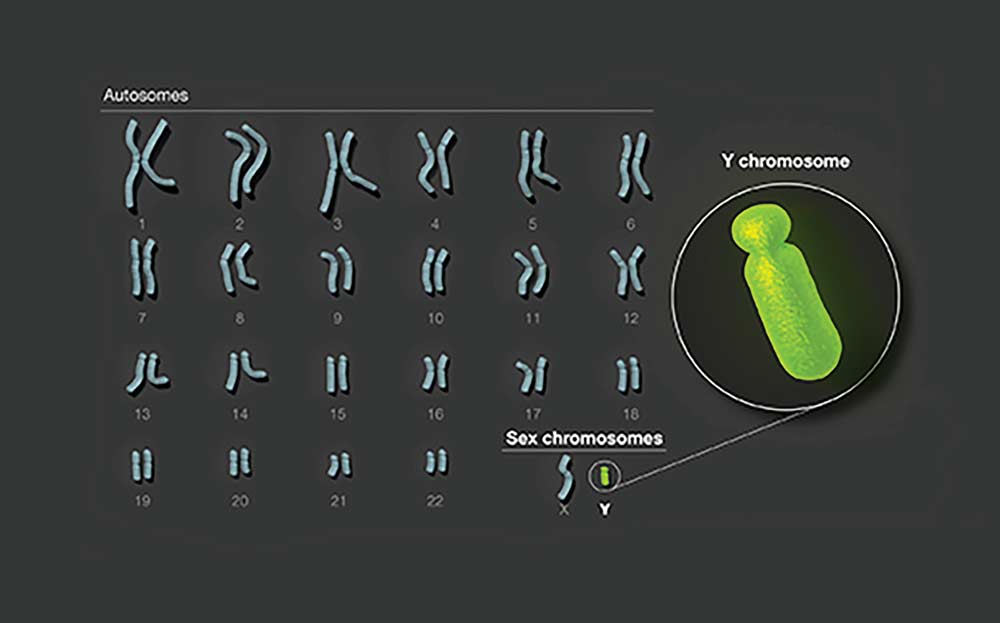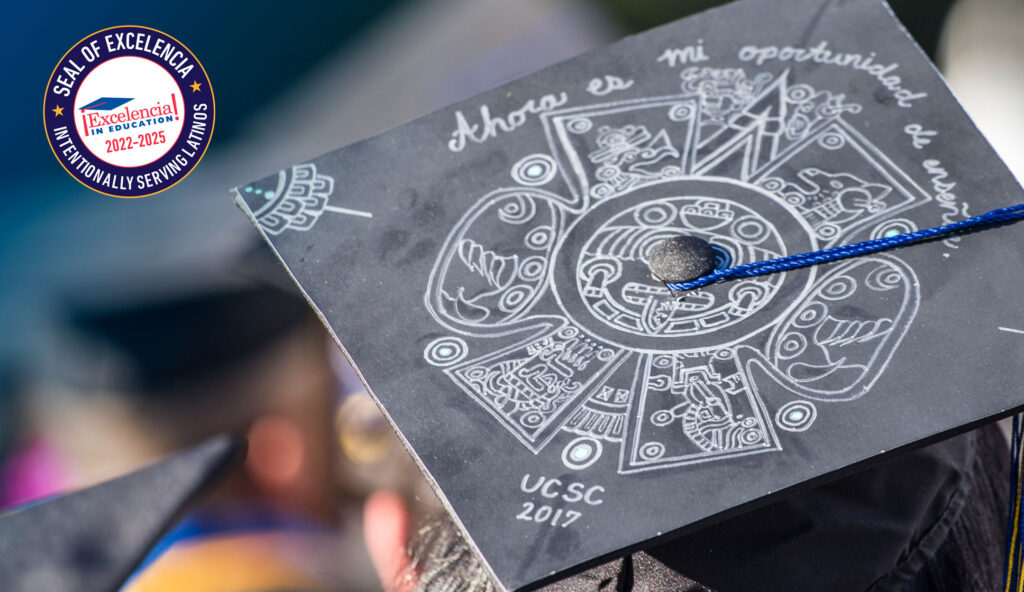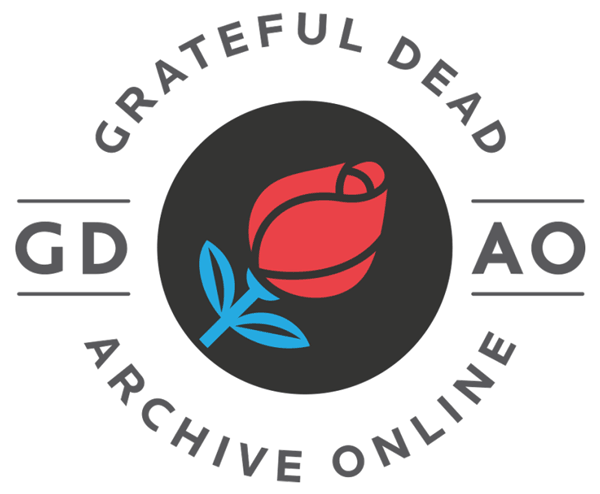Six decades of leading and learning
From its roots in 1965 as a cutting-edge educational experiment to its present as a research powerhouse and engine of social mobility, UC Santa Cruz has had so many significant moments and achievements. Take a tour of some highlights from our 60-year journey.


Two UC Santa Cruz research projects designed to leverage advanced forms of artificial intelligence to improve how scientists measure and predict the effects of climate change win funding from a $20 million investment by the National Science Foundation.

The project, which will be built in phases, will help the campus meet its ambitious plan to provide more than 40 percent additional student housing by 2030.

After a year-long campuswide conversation to craft a shared vision for the future, UC Santa Cruz releases a new strategic plan, “Leading the Change: The UC Santa Cruz Strategic Plan.” With goals and metrics to measure success in five thematic areas, the plan will guide the campus’s work for the coming decade.

Campus celebrates the completion of the first phase of the Kresge Renewal Project , which includes the opening of three new residential halls and a new academic center. The second and final phase of the project, slated to reopen in fall 2025, will restore existing buildings, adding more space for housing and residential life.

Scientists have completed the first full sequence of a human Y chromosome, completing the set of end-to-end human chromosomes and helping researchers to better understand human reproduction, evolution, and population change.
UC Santa Cruz scientists, along with a consortium of researchers, have released the first human “pangenome,” which better represents human genetic diversity—and ultimately could help to diagnose disease and guide treatments.

UC Santa Cruz’s Institute of the Arts and Sciences opens new, off-campus galleries, highlighting the work of major national and international artists working to address the most pressing issues of our day at the intersection of the arts and social justice.
Campus begins work on a renewal project at Kresge College, which originally provided housing for 368 students. Through a mix of new construction and renovation, the completed project will provide beds for 990 students.

UC Santa Cruz earns the Agricultural Experiment Station designation, marking more than 50 years of industry-leading research in organic agriculture and sustainable farming practices and opening doors to expanding community impact.

UC Santa Cruz earns the prestigious Seal of Excelencia certification for its work as a Hispanic-Serving Institution, following a thorough data-driven review by Excelencia in Education.

UC Santa Cruz announces that the campus’s Research Center for the Americas, celebrating its 30-year anniversary, will be named in honor of social justice icon Dolores Huerta, whose legacy has influenced the center’s work and values.

Joining with 19 leading universities, UC Santa Cruz announces the formation of the Alliance of Hispanic Serving Research Universities, which aims to achieve two key goals at alliance universities by 2030: double the number of Hispanic doctoral students enrolled, and increase the Hispanic professoriate by 20 percent.

Chancellor Cynthia Larive presented a bold vision for the campus’s future to the UC Regents, focusing on the campus’s four major goals: advancing student success; elevating UC Santa Cruz’s research profile; fostering an inclusive campus climate; and improving the sustainability of operations.

With a gift from anonymous donors, College Ten—a UC Santa Cruz college opened in 2002 with the theme of social justice and community—is named for John R. Lewis, the late American civil rights leader and politician.
Campus begins a wide-ranging, five-year initiative to increase financial support for students, as well as advance access to guidance and experiences fundamental to their education and future success.

Eminent biologist and Nobel laureate Carol Greider, known for her pioneering work on telomeres and for her powerful advocacy for increasing women and minorities in the sciences, joins the UC Santa Cruz faculty.

CZU August Lightning Complex fires sweep through the Santa Cruz Mountains, forcing an evacuation of campus—a first in its 55-year history. The crisis—combined with the ongoing COVID-19 pandemic—tests the campus community’s resilience.

UC Santa Cruz is elected to the prestigious Association of American Universities, an achievement that underscores the impact and quality of the campus’s research and graduate and undergraduate education.

The UC Board of Regents approve Cynthia K. Larive—a professor of chemistry and the executive vice chancellor at UC Riverside—as the 11th chancellor of UC Santa Cruz.

Chancellor George Blumenthal, who served 12 years as chancellor, announces he will step down at the end of the next academic year. Blumenthal, a theoretical astrophysicist, previously served as a UCSC faculty member since 1972.

After spending more than a decade silent, the Quarry Amphitheater—which had seen legends such as César Chávez, Angela Davis, Buckminster Fuller, Joan Baez, and more—is restored and reopened.

UC Santa Cruz’s first campuswide campaign wraps up, with record giving by alumni and friends in support of the student experience, high-impact research, and social justice and environmental responsibility. The campaign raised $335 million, surpassing the original goal of $300 million.

With a gift from the Helen and Will Webster Foundation, College Eight—opened in 1972 with the theme of environment and society—becomes Rachel Carson College, named for one of the great environmental prophets of the 20th century. It is the first UCSC college named after a woman.

UC Santa Cruz receives a gift of the photography collection of Pirkle Jones and Ruth-Marion Baruch, plus works by Ansel Adams, Dorothea Lange, and Edward Weston—an extraordinary archive of photographs documenting the people, landscape, and politics of California in the mid-20th century—valued at $32 million.
UC Santa Cruz opens its Silicon Valley Campus, recognizing the shared DNA between the campus the global tech hub: Asking big questions, not accepting conventional wisdom, and seeking to make the world a better place through innovation.

UC Santa Cruz marks its 50th anniversary with a year-long celebration of its trailblazing history and groundbreaking impact on the world.
Astronomer Garth Illingworth leads a team that peers deep into the universe with the Hubble Space Telescope to reveal the most distant galaxies ever seen.

Celebrated writer Jonathan Franzen, author of The Corrections, wrote much of his new best-selling novel, Freedom, at Cowell College. Franzen, recently on the cover of Time magazine, and his partner live part time in Santa Cruz. Both are longtime friends of UCSC.

The Grateful Dead donates its historic archives to McHenry Library’s Special Collections.
For the first time, undergraduate enrollment reaches 15,000.
The complete archive of renowned science fiction author Robert Heinlein made available online. Heinlein donated his archives to the Library’s Special Collections in 1968.
Faculty in UC Santa Cruz’s Jack Baskin School of Engineering launch a popular computer game design undergraduate major—the first of its kind in the UC system.
Former U.S. ambassador to Iraq Joseph Wilson—the husband of outed CIA operative Valerie Plame—among the featured speakers at “The War on Terror: A Credible Threat,” an educational teach-in at the Quarry Amphitheater.
Two geological features in Antarctica are named after UCSC biologists—Terrie Bluff and Costa Spur, named in honor of Terrie Williams and Daniel Costa, respectively, professors of ecology and evolutionary biology.

Two UCSC alumni inducted into NASA’s Astronaut Hall of Fame: Kathryn Sullivan (Cowell ’73, B.S. Earth sciences), the first American woman to walk in space inducted in May 2004; and Steven Hawley (Ph.D., astronomy and astrophysics ’77), whose five space shuttle flights included the 1990 mission to deploy the Hubble Space Telescope, inducted in May 2007.
For the first time, UCSC awards more than 3,000 degrees during an academic year.
The first draft of the human genome sequence was assembled at UCSC on off-the-shelf Pentium III processors running a software program written in four weeks by graduate student Jim Kent.
College Nine founded.

While doing research at the University Archives, Anthony Misch, a support astronomer at Lick Observatory, discovers a 400-year-old manuscript penned by Johannes Kepler, one of history’s greatest astronomers.
Undergraduate enrollment at UCSC reaches 10,000 for the first time.

Rain didn’t dampen the enthusiasm of the 800 people who crowded into the East Field House to witness the inauguration of UCSC’s seventh chancellor, M.R.C. Greenwood—the first woman to hold the post.

Alumna Laurie Garrett, who graduated with honors in biology (Merrill ’75), pens a groundbreaking series of articles for Newsday, chronicling the Ebola virus outbreak in Zaire. The series wins 1996 Pulitzer Prize for Explanatory Journalism.
Graduate student enrollment reaches 1,000.
Alumnus and Los Angeles Times reporter Hector Tobar wins a Pulitzer for his work as part of a team covering the Los Angeles Riots. Other Pulitzer-winning Slugs are author Laurie Garrett, Washington Post reporter Dana Priest, photographer Annie Wells, and Associated Press reporter Martha Mendoza.
UCSC’s doctoral program in international economics awards its first Ph.D. The campus’s economics department is often listed among the top 10 worldwide in international finance.

UC Santa Cruz makes plans to dedicate a new Science Library, with room for 200,000 volumes. The library would later be renamed the Science and Engineering Library.
UC Santa Cruz makes plans to celebrate University Library’s one-millionth volume.

Plans move ahead for construction on campus of a music facility with 400-seat hall.